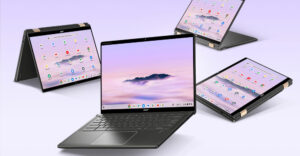
A shift in how entertainment is delivered to the home will increase demand for consumer electronics products with wireless networking capabilities and ignite explosive growth for WiFi, according to a study released this week by ABI Research.
In the report, ABI forecasted that shipments of WiFi-enabled consumer electronic devices will surge from 40 million in 2006 to 249 million in 2011.
A number of developments are driving consumer electronics manufacturers to embed WiFi in their products, explained ABI Research Director for Digital Home Mike Wolf.
“There’s more content [and] more portable devices, and things like online gaming services necessitate WiFi,” he told TechNewsWorld.
Watershed Events
A major brake on the spread of WiFi in consumer electronics devices was content, noted Rob Enderle, president and principal analyst of the Enderle Group.
“The ability to deliver content to devices has existed for awhile,” Enderle told TechNewsWorld, “but the problem has been content owners being unwilling to license their product so it can be delivered that way.”
That resistence to digital delivery of entertainment content was changed by two watershed events, maintained Wolf.
“When iTunes announced it was going to start distributing TV shows, it opened the flood gates,” he said. “You started seeing all the big studios saying they were going to put some of their key video assets online.
“The explosion of YouTube has shown that consumers really are going to be viewing content over the Internet,” he continued. “It makes sense to get that content from the PC to the TV.”
Bridging the PC-TV Gulf
That bridge between PC and TV is seen by some as a key driver of WiFi’s expansion into consumer electronics products.
“We’re going to see a big spike in WiFi devices when Apple brings out its iTV device next year,” asserted Enderle.
iTV is the code name for a PC-to-TV bridging device that Apple Computer is expected to introduce in early 2007.
Besides content problems, ABI Senior Analyst Philip Solis cited two other challenges that have, in the past, slowed WiFi infiltration of consumer electronics products.
Slow Standard Approval
“The development of a market for WiFi-enabled consumer electronics has been hampered by technology limitations such as power consumption, but it has also been delayed by consumer electronics vendors’ hesitation as they waited to see what would happen with 802.11n,” he stated.
802.11n is the standard for the next generation of WiFi devices. It’s faster and has better range than current standards.
“With the 802.11n standard set to be ratified in a little over a year,” he continued, “the Wi-Fi Alliance’s decision to certify solutions based on a draft 2.0 for 802.11n, and vendors’ intentions to release products based on the current WiFi protocols, this market is set for growth.”
Right now, though, network speed inside the home isn’t much of an issue, according to Enderle.
Saving Power
Since there have been problems with licensing movies, most of what’s traveling around the home is music, which isn’t taxing the bandwidth of home networks, he explained.
“Bandwidth could be a problem in the future, but right now the bottleneck is content availability,” Enderle said. “If we had 802.11n, we’d still have difficulty getting the legal content we want to move around the house.”
Not only does 802.11n address bandwidth challenges, but it’s also designed to conserve power, according to ABI’s Wolf.
“Since you can move content much quicker, you can get a portable device into power saving mode much quicker,” he noted.
Cell Phone Connection
Karen Hanley, senior director of marketing for the Wi-Fi Alliance in Austin, Texas, cited another hot growth area for the wireless technology: mobile telephony.
More and more cell phones will have WiFi, she maintained. “When you’re driving around, you’ll be on the cellular network,” she explained, “but when you come into an area with a WiFi network, the phone will switch to a WiFi signal that will give you a fatter pipe — higher throughput — and moves you to the unlicensed spectrum, which is cheaper for the carrier.”
By incorporating WiFi into their products, consumer electronics makers are tapping into a technology that has become very popular with consumers, Hanley observed.
“We did a study where we asked consumers what they’d choose if they had to give up their iPod or their WiFi,” she recalled. “Eighty percent said they’d sooner give up their iPod than their WiFi.”











































